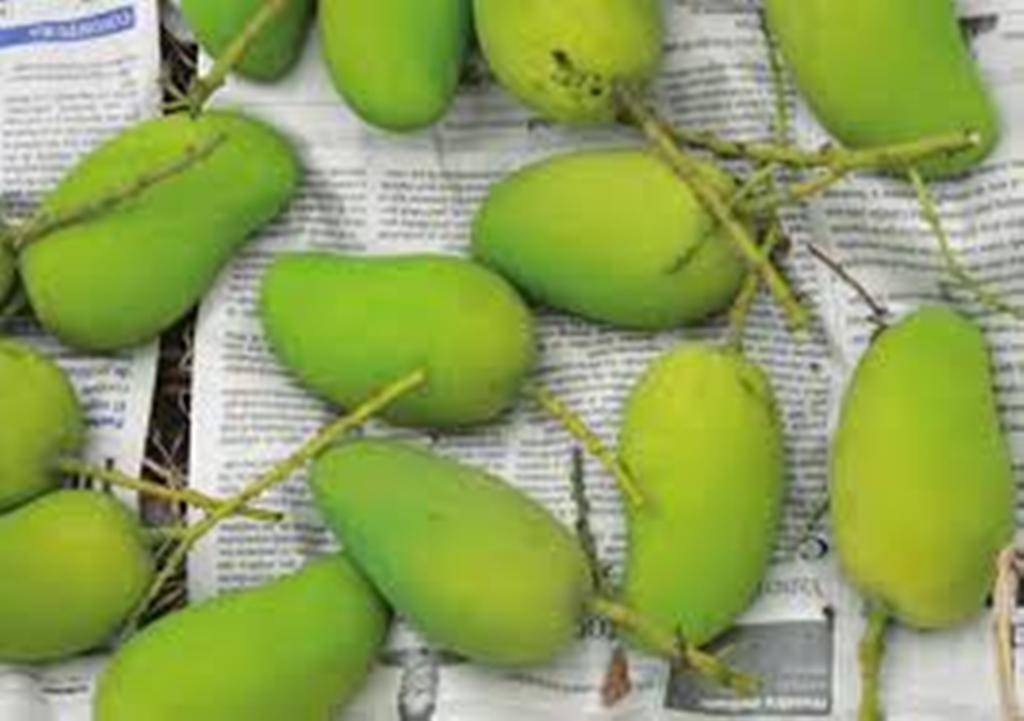
Sap injury is an important postharvest issue in Mango crop. It is a major concern for the mango cultivators all over the world. It affects the quality and also lowers the price. Different Research & Development experiments have been conducted to devise strategy for sap injury management for the benefit of the growers, laborers who pluck the mangoes from the trees. The mangoes with spots do not fetch good price and also the sap acid available inside the fruit also creates problem with the person who eats the same. The sap burning is very horrible.
In view of the Post Harvest Problem , we discussed the same with Professor (Dr) H M Chawla, Ex Head Department of Chemistry, Indian Institute of Technology, Delhi , who saw tomorrow today , concern with the problem brought solution to the sap burning with natural solution.
India which is primarily considered as an agricultural country, has largely been focused on production of grains, and vegetables. And, while there have been some cash crops, their scope and opportunity has not been thoroughly explored. For instance, India’s farmers may not have realized the potential of fruits to bring in revenue, beyond the market for domestic consumption.
Let’s take the example of mango –our very own king of fruits. India is the largest producer of mango in the world, but at the same time, globally, Mexico is the largest exporter of the fruit, accounting for 20 percent of world mango exports. It is important to note that the demand for mangoes is growing across the world, especially in markets such as the United States, Canada, the European Union, and China, and India can play a great role in fulfilling the demand.
The mango, being perishable, suffers with many postharvest problems including different diseases and disorders, which again reduce the value of fruits during storage. Among different postharvest problems, sap-burn or sap-injury in mango fruit is a major industry concern, as it results in poor fruit quality, lower prices and promotes microbial infection, due to the presence of nutrient materials like carbohydrates, protein etc. supporting the growth of such organisms.
Because of harvest, when the stem (pedicel) of a mango fruit is broken, the broken end exudes out sap, which adheres on the fruit peel causing serious skin damages within a few hours thereby, results an ugly look.
The Mango Sap is a very Acidic and can cause terrible Skin Burns?
The sap can squirt out from the stem when the mango is pulled off the stem, reaching distances of several metres. If it hits the eyes, it creates a very painful sting. On unprotected skin, even people not normally allergic to anything will be affected by mango sap after a few days. The burns become unbearably itchy, exacerbated by the humid climate, and the skin develops a ‘mango rash’ of small blisters.
How to prevent Mango Sap Burn Naturally?
Krishi Jagran discussed the problem with Dr H M Chawla, who had developed FruWash for the shelf life extension of fruits and vegetables as a remedy for the Post Harvest Technology.
With the advent of summer, the mango season also starts and during the peak time, the ripe mangoes are plucked from the trees.
Dr Chawla explained that how to cut the mangoes with the stem downward and also developed the natural solution without using any chemical to keep the fruit organically intact healthy. He clarifies that all over the world there is no natural remedy to cure the mango sap burning. Dr Chawla’s development is as natural as the FruWash was developed earlier.
Indian mangoes come in various shapes, sizes and colours with a wide variety of flavour, aroma and taste. The Indian mango is the special product that substantiates the high standards of quality and bountiful of nutrients packed in it. A single mango can provide up to 40 percent of the daily dietary fibre needs – a potent protector against heart disease, cancer and cholesterol build–up. In addition, this luscious fruit is a warehouse of potassium, beta- carotene and antioxidants. In India, mangoes are mainly grown in tropical and subtropical regions from sea level to an altitude of 1,500m. Mangoes grow best in temperatures around 27˚C.
For maintaining highest quality standards, State-of-the-art packhouses have been set up in major production zones. Keeping in view the different country requirements, internationally recognized treatment facilities like Hot water treatment, Vapour heat treatment and Irradiation facilities have also been set up at various locations across the production belt.
Unique product identification system, compliant to the traceability networking and Residue Monitoring Plan has been developed for the consumer safety and readiness to product recall in case of any emergency.















